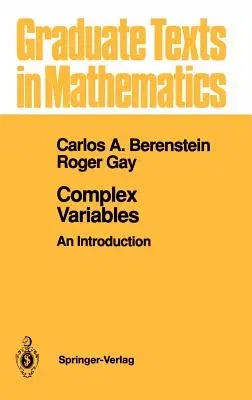Textbooks, even excellent ones, are a reflection of their times. Form
and content of books depend on what the students know already, what they
are expected to learn, how the subject matter is regarded in relation to
other divisions of mathematics, and even how fashionable the subject
matter is. It is thus not surprising that we no longer use such
masterpieces as Hurwitz and Courant's Funktionentheorie or Jordan's
Cours d'Analyse in our courses. The last two decades have seen a
significant change in the techniques used in the theory of functions of
one complex variable. The important role played by the inhomogeneous
Cauchy-Riemann equation in the current research has led to the
reunification, at least in their spirit, of complex analysis in one and
in several variables. We say reunification since we think that
Weierstrass, Poincare, and others (in contrast to many of our students)
did not consider them to be entirely separate subjects. Indeed, not only
complex analysis in several variables, but also number theory, harmonic
analysis, and other branches of mathematics, both pure and applied, have
required a reconsidera- tion of analytic continuation, ordinary
differential equations in the complex domain, asymptotic analysis,
iteration of holomorphic functions, and many other subjects from the
classic theory of functions of one complex variable. This ongoing
reconsideration led us to think that a textbook incorporating some of
these new perspectives and techniques had to be written.

